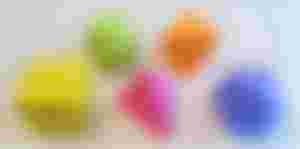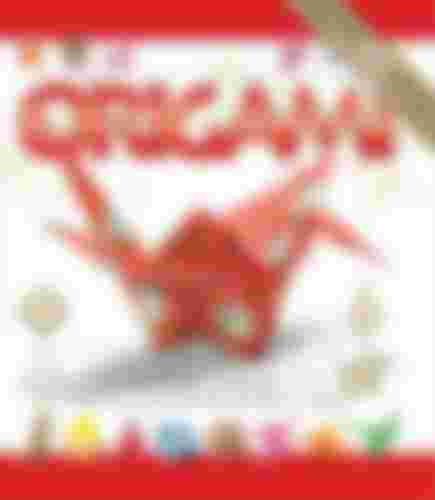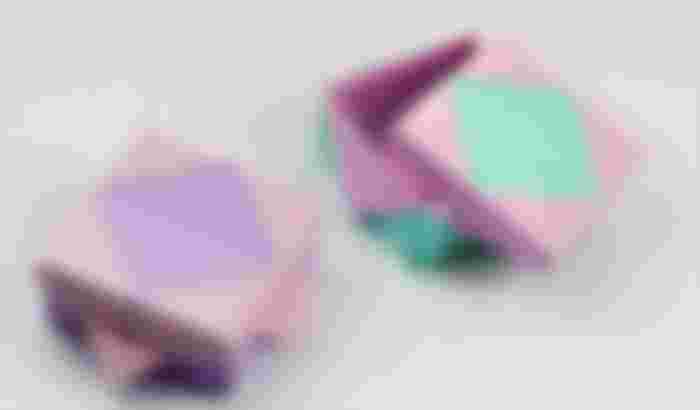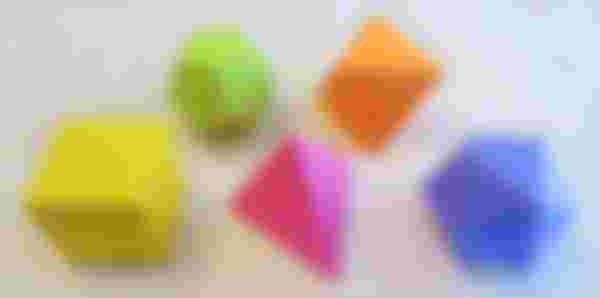
The word Origami comes from the Japanese language and is derived from the words ori (saviti) and kami (one of several words for paper). Simply put - origami is the skill of bending a sheet of paper or cardboard to get the desired shape, whereby the paper is not allowed to be cut or glued.
To obtain less rigid shapes, it is allowed to make small cuts or elongated slits ("senbazuru" technique where one sheet of paper is divided into several smaller but connected squares).

The origin of origami
No one knows exactly when this technique was invented, but since man first had to invent paper, we can say that this technique cannot be older than two thousand years.
Although it has a Japanese name, some believe the skill originated in China. The oldest book with instructions for making origami-like objects "Kanamodo" was written in the 17th century. The oldest book on origami for leisure is "Hiden senbazuru or kata" ("The Secret Technique of Bending a Thousand Cranes"), written in 1797.
There are about a thousand models that are considered traditional origami and that are passed down from generation to generation in Japan. Interestingly, until the middle of the 20th century, this technique was considered a pastime for women who made paper models for weddings, funerals, and other occasions or as entertainment for children.
Origami in Europe
The German Frederick Wilhelm Frebel (1782-1852), who devised the concept of kindergartens and preschools, realized that making shapes out of folded paper helps the young mind to master the concepts of proportion, relationship, and symmetry through simple origami models such as tangram. Thus, he was the first to introduce the teaching of this technique in kindergartens in Europe. Cognitive skills and dexterity develop as you fold the cardboard to make a small box.
Since the end of World War II, when people all over the world started going to Japan, this harmless pastime has started to spread around the world, especially among exchange students. The people who explained the movements in bending paper and cardboard were Akiri Yoshizawa from Japan and Samuel Randlett from America. They made standardized signs so that people from different countries who do not speak the same language could exchange ideas and instructions for origami.
As the modern collection of origami designs developed, new methods of bending paper and cardboard were discovered. Some designers use both mathematical theory and computer programs to devise the desired proportions. As a final result, paper airplanes and mobile models have a model that is not static but starts or flies.
Jonathan Baxter, an origami artist, made a series of huge dinosaur skeletons in the United States. In full size they reach 30m! One young fan of origami made the Lords of the Rings (Gimli, Aragorn, and Legolas), another made a life-size Origami house in Melbourne that has chairs, a table, a laptop all made of paper. This is an old art that has been modernized and flourished in the 21st century, but Japan will always be the world center of origami.

How to fold paper and cardboard
The trained eye reads the fold lines on a sheet of paper, interprets their meaning, and folds the paper as the designer intended. The scheme of bending the lines is very important, all the bending lines are recorded to get at least the base of the figure.
A few hundred bends are needed to assemble the model!
The origami paper is colored on one side and white on the other. When the diagram indicates the colored side, it is thus made known which color will be dominant on the finished model. Origami masters say that good origami is made with patience and precision.
For anyone who will need larger amounts of paper and cardboard, visit the online Pack shop.
Origami in mathematics teaching
Visualization plays a big role in teaching mathematics. Many axioms, theorems, and definitions are easier to understand if they have their own visual representation. Origami can be used in teaching mathematics to visualize certain geometric concepts. The benefits of origami are numerous. Making origami models from paper and cardboard is suitable for working in groups because, in addition to teamwork, socialization is also achieved. Students adopt new mathematical concepts and notice new relationships in space or the coordinate system.

For folding paper and cardboard, they use their own hands that follow a certain series of steps and give visible results. For the result to be successful, the steps must be carried out in an exact way described. This is how dexterity and precision in work develop.
Origami in mathematics can show three-dimensional geometry, central and axial symmetry, polygons, Plato's bodies and other polyhedra, parallelism, intersecting directions, the intersection of planes, harmony and similarity, surfaces, angles, and angle bisectors…
We can also prove some theorems. The material is needed for the work in one or several sheets of paper. No scissors or glue are needed. This type of material is available in almost all schools, so it is very easy to design a fun, interesting, and instructive math class that will arouse students' interest in further, independent research.
Solar origami in space
Origami is a Japanese art of making paper models that have been passed down from generation to generation for many years. Literally, it is based on folding the paper until the desired model is obtained, either directly or by unrolling it in a certain way. It is a traditional art and like any similar one, it has its experts. Since the price of sending a satellite into space is just like the mission - astronomical, the goal is to reduce the object and make it as compact as possible until it comes into space, and after so many invested resources to reach the goal of the mission.

Power supply always seems to be the main problem for larger systems, for which solar panels are used.
The size of such panels sometimes has to be huge for everything to work, which, at least so far, has undermined the idea of compactness. Instructed by this, a group of spacecraft engineers from Brigham Young University enlisted the help of origami expert and physicist Robert Lang to design an origami version of the solar panel. It is designed to be wrapped around the main part of the satellite, its fuselage, in a "packed" state, and to reach a size approximately ten times larger than the original state when "unwrapped". Along with compactness, the main goal of their mission is for such an origami solar panel to produce 250 kilowatts of electricity. NASA has decided to dedicate itself to that research for the next few years.
Origami in the world
This traditional Japanese art is becoming increasingly popular. The number of origami lovers in the world is increasing every day. The number of published books established by organizations and open pages on the Internet is growing. The popularity and prevalence of origami are shown by organizations such as Origami Deutschland, Mouvement Francais des Plieurs de Papier, Israeli Origami Center, Centro Diffusione Origami (Italy), Japan Origami Academic Society, Origami USA, Asociacion Espanola de Papiroflexia, British Origami Society…
Finally, I suggest you visit the following pages on the Internet and make sure that origami is attractive





Yes you are right. The word Origami comes from the Japanese language and is derived from the words ori (saviti) and kami (one of several words for paper). Simply put - origami is the skill of bending a sheet of paper or cardboard to get the desired shape, whereby the paper is not allowed to be cut or glued. Thank you.